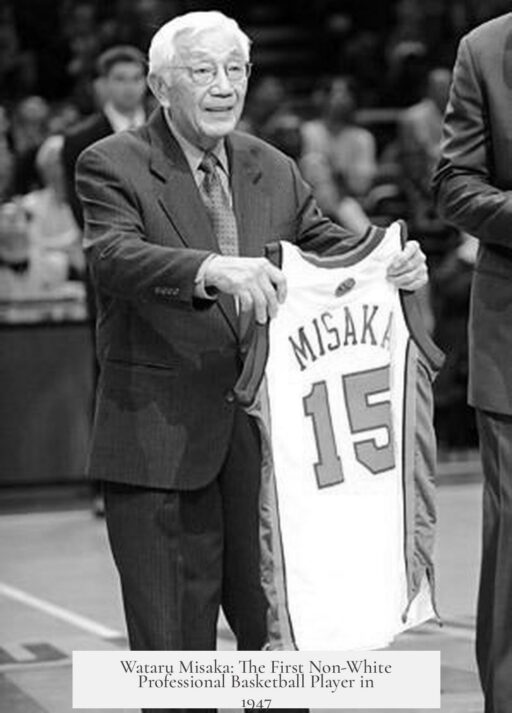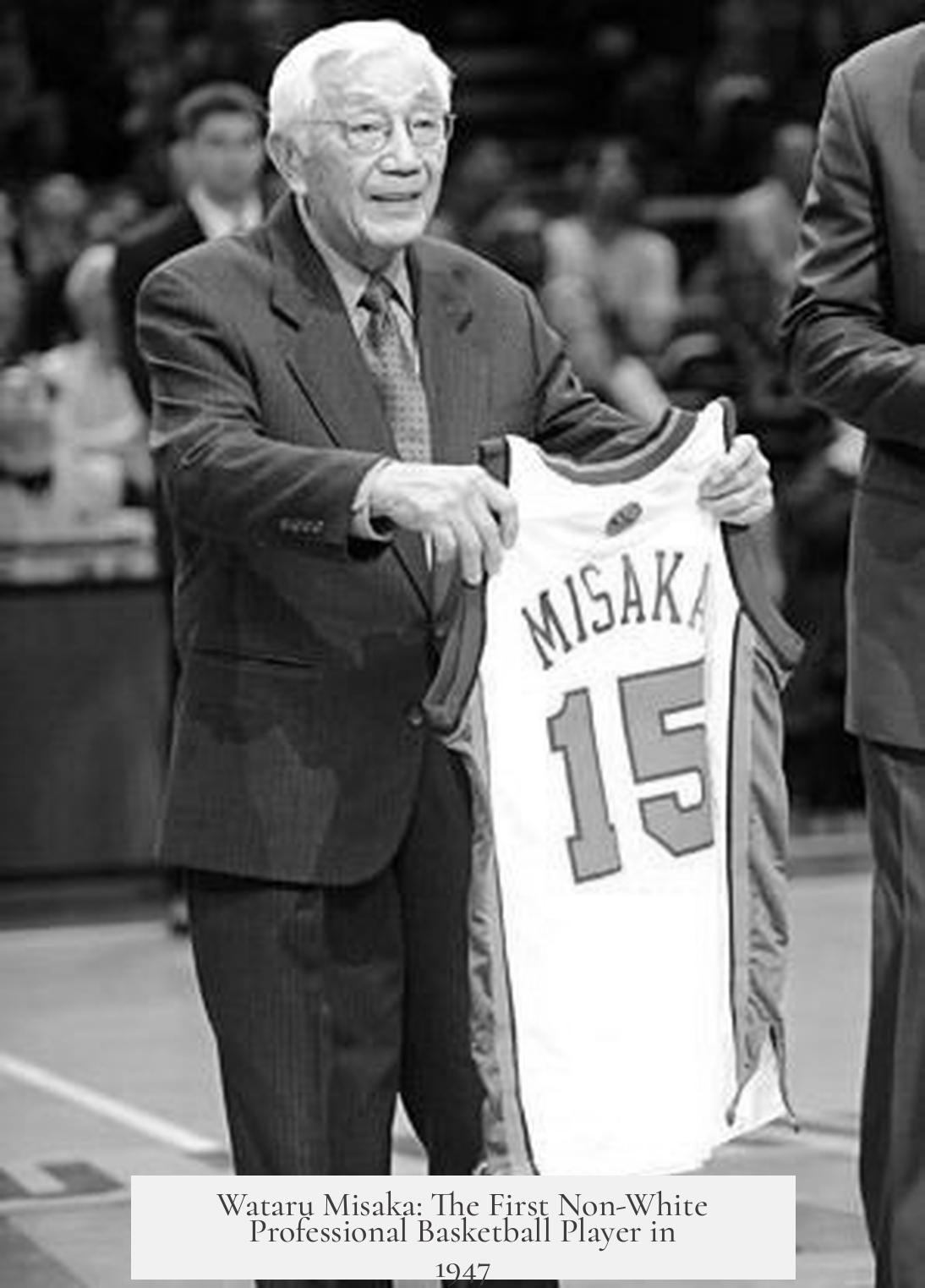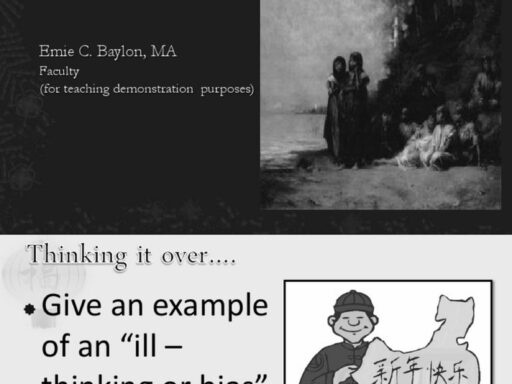Wataru “Wat” Misaka became the first non-white professional basketball player in the United States in 1947 despite being only 5’7″ by demonstrating exceptional skill and breaking racial barriers as a Japanese-American during a time of racial tension and limited representation.
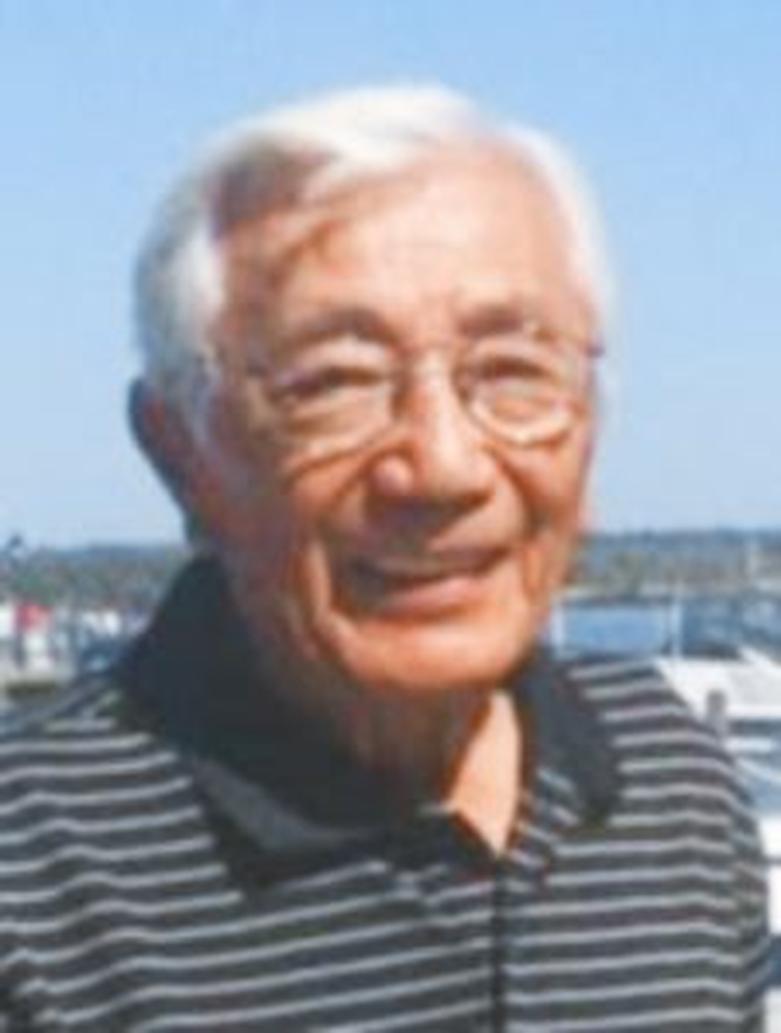
Misaka played for the University of Utah and was drafted into the Basketball Association of America (BAA), which later merged with the National Basketball League (NBL) to form the NBA in 1949. His selection in the inaugural draft was a landmark moment in professional basketball history, marking a step toward integration.
Several factors helped Misaka overcome height and racial challenges:
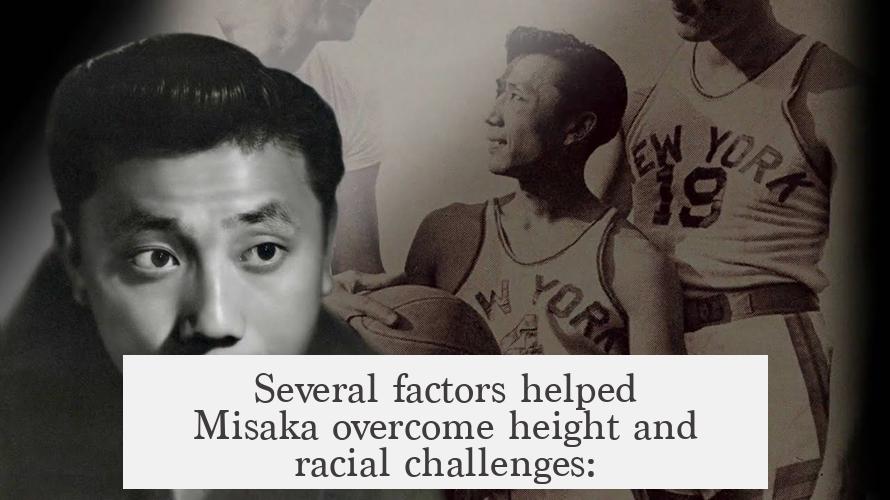
- His basketball skills and agility allowed him to compete at the highest level despite his height being below average for the sport.
- The BAA was establishing its professional structure, opening opportunities for talented players regardless of background.
- The era saw multiple competing leagues and barnstorming teams, such as the Harlem Globetrotters and New York Rens, featuring African American players before the NBA’s integration.
- While Misaka was among the first Asian Americans in major professional basketball, other non-white players, including Black athletes like Chuck Cooper, entered the NBA draft and league soon after.
It is important to clarify that although Misaka is noted as the first non-white player in the NBA lineage, professional basketball had seen non-white players in various leagues and barnstorming teams earlier. The NBL had some level of integration in the early 1940s, with Black players joining teams well before the NBA’s official formation.
Misaka’s story is remarkable due to the prevailing racial attitudes, especially toward Japanese-Americans in the post-World War II period. His entry into professional basketball symbolizes resilience and progress in sports integration. His height of 5’7″ was not the shortest in the league; for example, Red Klotz, also 5’7″, won a BAA title in 1948, and later players such as Muggsy Bogues at 5’3″ demonstrated that shorter players could succeed.

In summary, Misaka’s legacy rests on his skill, cultural breakthrough as a Japanese-American athlete, and timing during the formative years of professional basketball.
| Key Points |
|---|
| Misaka was drafted into the BAA’s inaugural draft in 1947, becoming a pioneer for Asian-Americans. |
| Several non-white players competed in various leagues and barnstorming teams before Misaka. |
| His height of 5’7″ was below average but not unprecedented for professional players. |
| Misaka’s entry marked significant racial integration during a challenging social climate. |
| Other Black players, such as Chuck Cooper, also entered the NBA draft shortly after. |
How Did Wataru “Wat” Misaka, at Only 5’7″, Become the First Non-White Professional Basketball Player in the US Back in 1947?
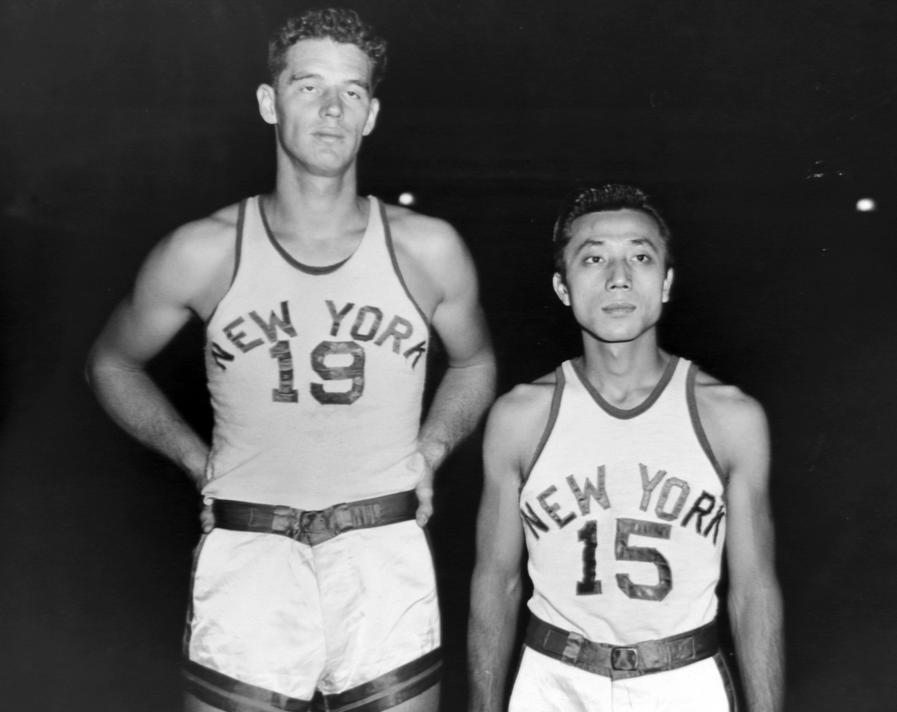
Wataru “Wat” Misaka breaks barriers in 1947 by becoming the first non-White player drafted into what became the NBA, despite standing only 5’7″. His story is not just about height, but about cultural courage and breaking boundaries in a complex sporting landscape. But let’s dive into the full picture, because history isn’t always as straightforward as a headline.
At 5’7″, Misaka was considered short, even then. Today, average NBA player heights hover around 6’6″. So, how did a guy his height make it? The key is skill, resilience, and timing during a period of league fragmentation and racial barriers.
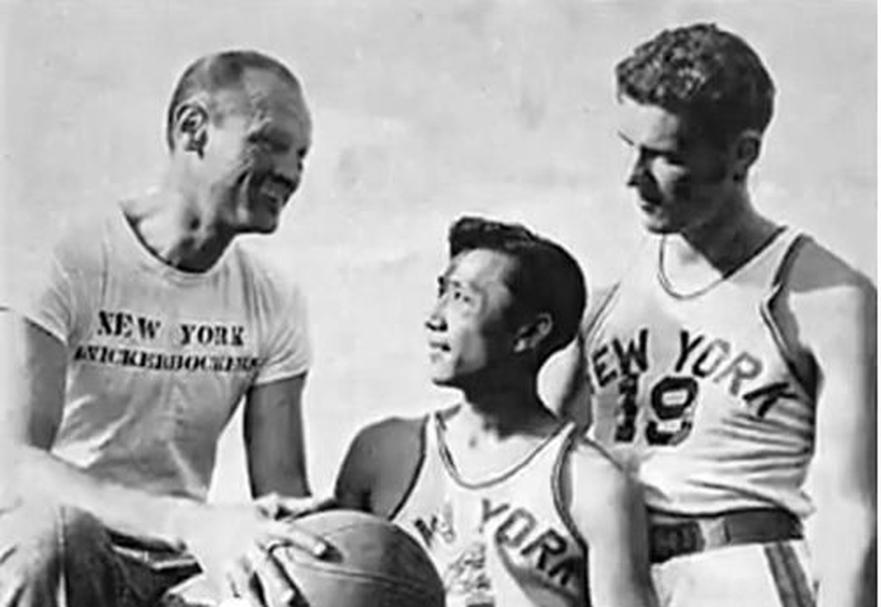
Setting the Scene: The Basketball World in the 1940s
Back in the 1940s, there wasn’t a single dominant basketball league like today’s NBA. Instead, multiple competing leagues and barnstorming teams existed simultaneously. These included the famous all-Black New York Rens and the Harlem Globetrotters, who dazzled crowds with skills and showmanship.

Furthermore, these teams often competed in the World Professional Basketball Tournament, which gathered top talent from many leagues and independent teams. Teams such as the Philadelphia Sphas—representing the South Philadelphia Hebrew Association—claimed 10 American Basketball League titles, showing the diversity in American basketball.
The fragmented landscape means that the title “first non-White pro basketball player” needs context. African-American players were already breaking ground during this period with teams like the Globetrotters and the Washington Bears. Jesse Owens, the track legend, even played basketball for the Kansas City Stars and later the Globetrotters in 1946.
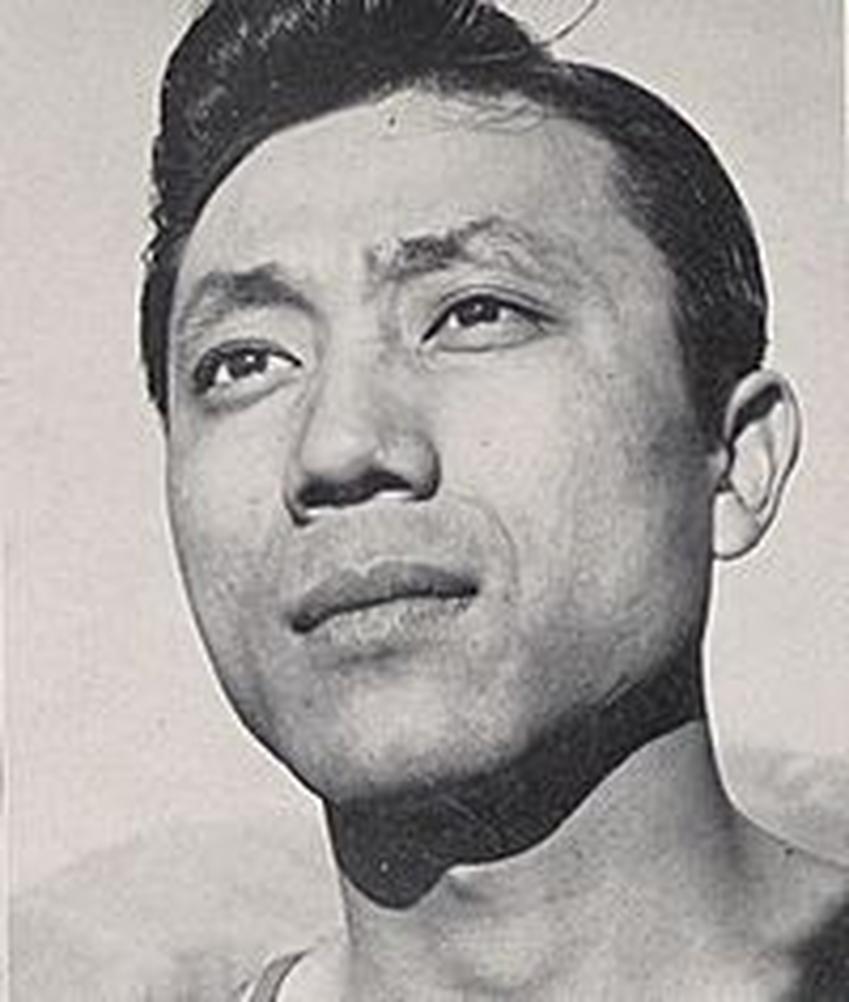
Misaka’s Unique Remark: A Japanese-American Pioneer
What really sets Misaka apart is his Japanese heritage during a time fraught with post-WWII tensions. 1947 America was not a welcoming place for many Asian-Americans. Anti-Japanese sentiment was high only two years after the war ended. This makes Misaka’s entry into professional basketball historically significant beyond racial integration seen in Black players.
Unlike the African-American players who were slowly integrating various leagues, Misaka was a Japanese-American selected during the inaugural draft for the league that would later become the NBA (a merger of the NBL and the Basketball Association of America). This timing created a unique milestone.
But Misaka wasn’t entering an empty league. The National Basketball League (NBL), one of the NBA’s parent leagues, integrated Black players as early as 1942. Teams like the Toledo Jim White Chevrolets and Chicago Studebakers proudly signed Black players. By the league’s final year, the entire New York Rens joined the NBL. Misaka’s story sits among many integration efforts — but his is extraordinary given the era’s negative views on Japanese Americans.
The Height Factor: Small in Stature, Giant in Impact
Being 5’7″ had its challenges. Even then, scouts and managers favored taller players. But history shows height isn’t everything. Red Klotz, also 5’7″, won an NBA title with the Baltimore Bullets in 1948 — the shortest player to do so at that time. And just so you know, the NBA officially recognizes that championship.
Interestingly, Red Klotz wasn’t the shortest player ever. That honor goes to Muggsy Bogues, who stood only 5’3″. Yet Klotz’s championship win still shines as a testament to skill trumping mere size.
Likewise, Misaka’s presence on the court showed that quick, smart, and technically sound play could defy physical expectations. His defense and ball handling impressed coaches and peers, earning respect despite systemic challenges.
Why Does Misaka’s Story Matter Today?
Understanding Misaka’s role requires stepping beyond the simplistic “first non-White player” angle. Early basketball history is dotted with complex racial dynamics and multiple leagues, which muddle “firsts.” Yet, Misaka’s Japanese-American identity in 1947 remains profoundly notable.
His story is a reminder that sports have often been arenas for broader social shifts. Misaka’s courage to break into professional sports during a bitter era of racial intolerance speaks volumes about perseverance.
Basketball fans and historians alike can learn from this: integration didn’t happen in one swift moment but via many smaller, overlapping stories—each player a pioneer in different ways.
What Can We Learn from Wat Misaka?
- Skill Matters More Than Size: At 5’7″, Misaka challenged stereotypes about ideal basketball physique.
- Timing and Opportunity: His selection coincided with the transitional period when basketball leagues merged and racial integration began.
- Cultural Barrier Breach: Being a Japanese-American post-WWII, Misaka pushed through societal discouragement and bias.
- Context is Key: Knowing about barnstorming teams and separate leagues is crucial to understand basketball’s true integration history.
- Persistence Pays Off: Misaka’s story urges aspiring athletes to leverage their unique strengths, regardless of external expectations.
Wrap Up: More Than Just a Height or a Date
The simple question—how did a 5’7″ Japanese-American player become the first non-White pro basketball player in 1947?—opens a window into a deeper, richer narrative. Misaka’s success hinges on skill, social context, and the fragmented basketball ecosystem of his time.
He didn’t have the luxury of a single dominant league or a welcoming cultural climate. Instead, he made his mark through sheer talent and resilience. And that makes him a timeless symbol of overcoming odds—from height to heritage.
So, next time you hear about Misaka, remember: His legacy isn’t just about being first or shortest, but about breaking invisible walls in a world ready for change yet still resistant to it.
